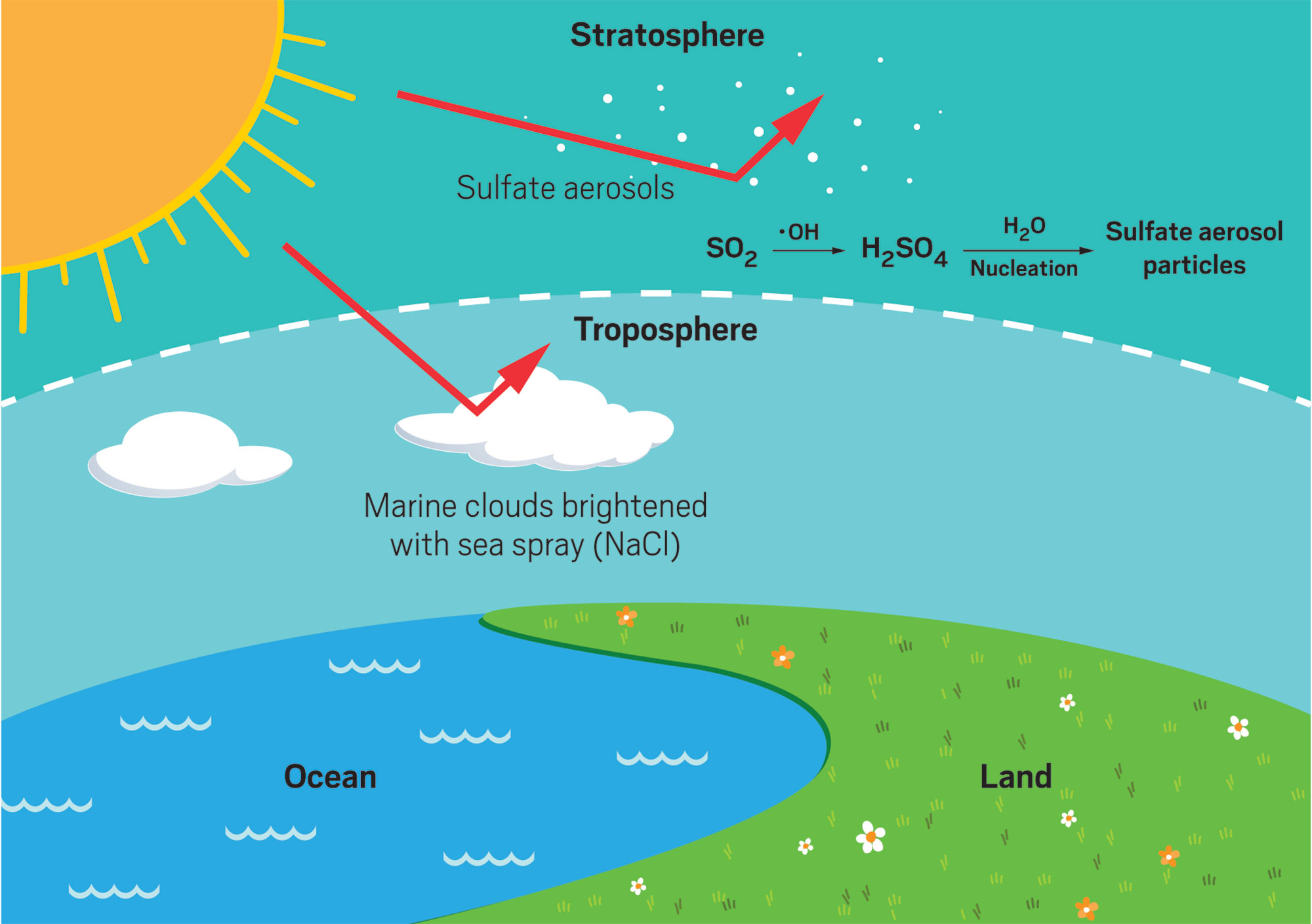Startup Secures $60M for Sunlight Reflection Tests
Startup secures $60M for solar geoengineering tests, aiming to reflect sunlight and potentially cool the planet, amid ethical and environmental concerns.

Major Startup Raises $60 Million to Test Controversial Global Cooling Technology
An Israeli-American startup has secured $60 million in funding to advance a bold and contentious approach to global cooling: testing technology designed to reflect sunlight away from Earth by spraying reflective particles into the upper atmosphere. This marks one of the largest private investments to date in solar geoengineering, a field that aims to temporarily counteract global warming by increasing the planet’s albedo—its ability to reflect solar radiation back into space.
The company, whose name has not been publicly disclosed in available reports, is preparing to move from theoretical models to real-world experiments, raising both hopes for a potential climate “emergency brake” and concerns about unintended environmental consequences. The funding round, reported by multiple outlets in October 2025, signals growing investor interest in high-risk, high-reward climate interventions as the world struggles to meet Paris Agreement targets.
The Science Behind Solar Geoengineering
Solar geoengineering—specifically stratospheric aerosol injection—involves releasing tiny, reflective particles (such as sulfur dioxide or calcium carbonate) into the stratosphere. These particles scatter sunlight, reducing the amount of solar energy that reaches the Earth’s surface and, in theory, lowering global temperatures.
- Mechanism: The technology mimics the cooling effect observed after large volcanic eruptions, which spew sulfur particles into the atmosphere and can temporarily cool the planet by up to 0.5°C.
- Scale: Unlike carbon removal, which addresses the root cause of climate change, solar geoengineering treats a symptom—excess heat—and does not reduce atmospheric CO₂.
- Duration: Effects are temporary, lasting months to a few years, requiring continuous or periodic deployment to maintain cooling.
The startup’s $60 million funding will be used to conduct controlled small-scale tests, likely involving high-altitude balloons or specialized aircraft to release and monitor particles. These experiments aim to gather data on particle behavior, atmospheric chemistry, and potential side effects—critical steps before any large-scale deployment could be considered.
Controversy and Ethical Concerns
The pursuit of solar geoengineering is fraught with scientific, ethical, and geopolitical challenges:
- Environmental Risks: Potential side effects include disruptions to regional weather patterns, ozone layer depletion, and impacts on agriculture and ecosystems. The long-term consequences remain poorly understood.
- Governance: There is no international framework for regulating solar geoengineering. Unilateral action by a single nation or company could have global repercussions, raising questions about accountability and consent.
- Moral Hazard: Critics argue that even discussing solar geoengineering could reduce political and public urgency to cut greenhouse gas emissions, the primary driver of climate change.
- Equity: The benefits and risks of geoengineering may be distributed unevenly, with vulnerable populations potentially bearing the brunt of negative outcomes.
Despite these concerns, proponents contend that research is essential to understand the technology’s potential—and its limits—in case rapid, drastic cooling becomes necessary to avoid climate catastrophes such as ice sheet collapse or crop failures.
Industry and Policy Context
The $60 million investment is a notable milestone for climate tech, reflecting a surge in venture capital for radical climate solutions. While most climate startups focus on carbon removal, renewable energy, and energy efficiency, solar geoengineering represents a more speculative—and controversial—frontier.
- Investor Appetite: The willingness of venture capitalists to fund such a high-stakes experiment underscores both the urgency of the climate crisis and the appetite for breakthrough technologies.
- Policy Landscape: Governments and international bodies have been cautious. The United Nations Environment Programme (UNEP) has called for a precautionary approach, and some countries have imposed moratoria on outdoor experiments.
- Scientific Consensus: Major scientific bodies, including the U.S. National Academies of Sciences, Engineering, and Medicine, have recommended phased, transparent research to fill critical knowledge gaps.
Broader Implications for Climate Action
The startup’s initiative arrives as the world experiences record-breaking temperatures, intensifying wildfires, and unprecedented extreme weather events. Even with aggressive emissions reductions, many scientists warn that some level of overshoot beyond 1.5°C is likely, increasing interest in “last resort” options.
- Complementary Strategies: Solar geoengineering is not a substitute for decarbonization but could—in theory—buy time for societies to adapt and for carbon removal technologies to scale.
- Public Engagement: The lack of public awareness and debate around geoengineering is a concern. Transparent communication and inclusive governance will be essential to navigate the ethical and societal dimensions.
- Global Coordination: The potential for cross-border impacts underscores the need for international cooperation, oversight, and clear rules to prevent misuse or unintended harm.
Visualizing the Technology
While no official images of the startup’s technology or test platforms are available in current search results, the concept is often illustrated with diagrams showing high-altitude balloons or aircraft releasing aerosols into the stratosphere, alongside visualizations of Earth’s albedo and solar radiation management. For an accurate representation, readers should look for scientific renderings from institutions like the IPCC or the National Academies, which depict the mechanics of stratospheric aerosol injection.
Key Quotes and Perspectives
“Climate startups are powerful engines of innovation and play a key role in accelerating the transition to a low-carbon future,” said Robyn McGuckin, Executive Director of P4G, though her comment referred to a broader set of climate solutions, not specifically geoengineering.
The CEO of the startup has not been quoted in available reports, reflecting the sensitive and early-stage nature of the project. However, the scientific community remains divided, with some advocating for cautious research and others warning against opening a “Pandora’s box” of planetary-scale experimentation.
Conclusion
The $60 million investment in a startup testing sun-reflecting technology marks a significant, if controversial, step in the evolution of climate tech. While the potential to rapidly cool the planet is tantalizing, the risks—scientific, ethical, and geopolitical—are profound. The coming years will see increased scrutiny of such experiments, demanding robust oversight, public dialogue, and international cooperation. For now, solar geoengineering remains a speculative tool in humanity’s climate arsenal, one whose future will depend as much on societal choices as on scientific progress.



